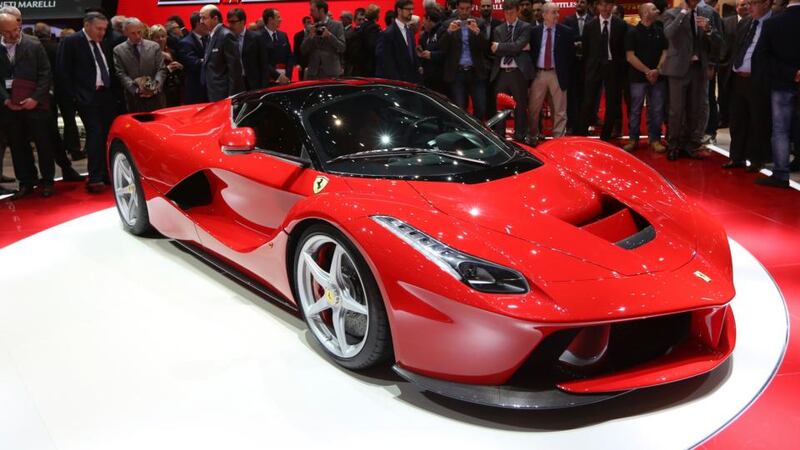The Ferrari motor company and Trinity College Dublin are building a research relationship that will see vehicle and component designs coming from Italy being tested and assessed here.
It will also involve a student exchange, with the first two Masters in engineering students from Trinity due in Maranello, northern Italy shortly to begin internships with the iconic Italian motor company.
Although the internships are new, the links between Trinity and Ferrari go back in a roundabout way to the 1980s, explains Prof Henry Rice. Max Szwaj is head of the innovation and body engineering department at Ferrari S.p.A. but he also happens to be a Trinity graduate.

Since leaving Dublin Mr Szwaj has worked exclusively in automotive design, Prof Rice explains. "Our contact is Max, who went through engineering school in the late 1980s. He always wanted to work on design and has been in Porsche, BMW and now Ferrari. He is a real ideas guy."
The Trinity connection paved the way to the engineering Masters internships which will see students Niall Williams and Giacinto Rittgers working at Ferrari over the coming months.
Their projects relate to the work of the MilleChili Lab established in 2009 in collaboration with Ferrari's local university, the University of Modena. Its goal is to deliver a production sportscar that weighs no more than 1,000 kg.
“Lightness is everything, so anything you can do to get rid of weight means you can put something else in, for example more torsional rigidity,” Prof Rice says.
Niall will develop ways to integrate carbon fibre into car chassis elements. “We want to make a lighter roof by adding carbon fibre but how do you join a carbon fibre component to an aluminium one,” he says.
“They are two very different substances that expand and contract differently and don’t readily bond. This is state-of-the-art stuff.”
Giacinto will work on shock absorption, something that increases safety in a crash situation, Prof Rice said. "The object is to allow absorption of energy at the front of the car but you don't want to compromise total rigidity. You want to absorb the impact but retain rigidity for handling."
Much of the initial work will be done using computer modelling to assess any negative impact on the all-important handling characteristics of a sports car, while addressing increased safety for the driver.
Ferrari does a good deal of work in cooperation with Modena and Trinity will now draw up a memorandum of understanding between the institutions to increase collaboration.
"They are interested in working with us because we do the experimentation, " Prof Rice says. Ideas are developed in Italy but ultimately actual components will have to be made from the designs and tested and this is Trinity's area of strength.
“We are also linked to the Crann [nanotechnology] Institute so access to novel materials is available, but they are particularly interested in testing. We have a nice little marriage there.”
The students will have a strong back-up team at Trinity overseeing their work, including Prof Ciarán Simms who works on crash dynamics and Prof Rocco Lupoi. Prof Rice believes that Niall will move into some aspect of engineering design after completing his Masters while Giacinto will likely work in auto design.
“This is great training for regular mechanical engineering students. The training we give them is to be able to make things and get them onto the road, or onto the sea or into the air,” he says.
“This project is interesting because the students are working on an industry project at a high level. We are trying to get companies to come up with direct research projects, ideas that can be solved, we call them drop-down grant challenges.” This gives the engineers something concrete to work on and a well defined project.
Ferrari came up with four such projects and two were taken up. “The relationship can grow. Ferrari is interested in other collaborations. This is just a taster. The next stage for us would be a full PhD programme.”
Placement at Ferrari would expose the two students to the reality of working in a highly innovative environment in Ferrari R&D, says Max Szwaj who will work with both of them.
Giacinto says he has always been passionate about car design and so described his placement at the automotive icon as “a dream come true”. He said it would be a “memorable personal, technical and professional growth experience for me”.
Prof Simms said the project was a great opportunity for the students and he hoped it would be the start of a sustained cooperation between Trinity, Ferrari and Modena. He also hoped that as the level of exchange increased, undergraduate internships might arise in fields such as pedestrian and vehicle occupant safety, areas that are central to modern vehicle design.











